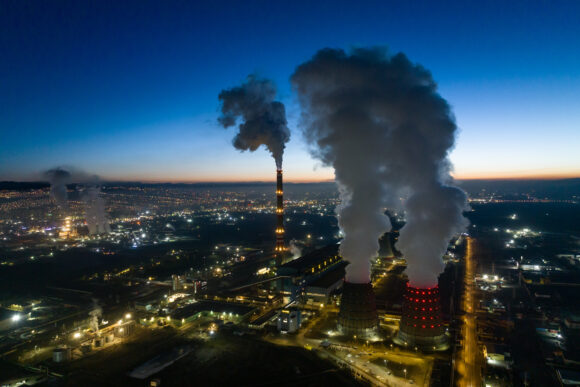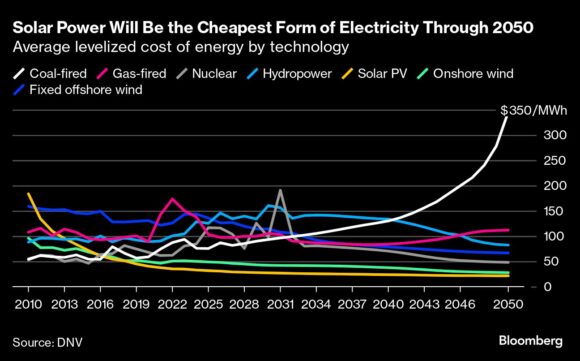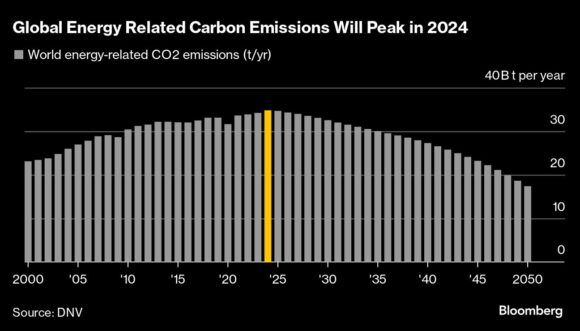The world is choking from emissions more than ever, but that trend is set to reverse starting next year as the cost of solar panels and batteries crowd out coal and stunt the growth of oil, a new report says.
DNV, a Norwegian risk management company, finds global emissions likely have peaked, but the transition to clean energy remains “too slow.”
“Worryingly, our forecasted decline is very far from the trajectory required to meet the Paris Agreement targets,” DNV Chief Executive Officer Remi Eriksen wrote in the report. “In particular, the hard-to-electrify sectors need a renewed policy push.”
Though renewable growth continues to beat records, some countries continue to struggle, the report said. More military spending and tough economic conditions mean nations are sometimes turning away from ambitious climate goals.
“There is a growing mismatch between short-term geopolitical and economic priorities versus the need to accelerate the energy transition,” Eriksen added.
The cost of deploying solar panels and battery technology is due to drop by 19% by 2030, helping deliver record amounts of low carbon power. Renewables are due to grow to 2.2 times by 2030, well below the tripling set out during the COP28 United Nations Climate Change Conference. Similarly, energy efficiency improvements are taking place at about half the rate recommended by the UN’s climate body.
DNV lowered its 2050 forecast for wind power by 18%, the second year it cut expectations. Higher financing costs, supply chain issues and turbine quality concerns are to blame, it said.
Hydrogen also saw its outlook downgraded 21% from last year’s estimate. The clean fuel is now set to provide 1.5% of global energy by 2040, down from the 2.6% set out last year. The high cost of hydrogen and the lack of price visibility on carbon is a major challenge for the sector, according to DNV. And carbon capture technology is not expected to be a huge contributor to emissions reductions for similar reasons, DNV said.
Photograph: Smoke and water vapor from the Ulaanbaatar Thermal Power Plant No. 4 combined heating and power plant at dawn in Ulaanbaatar, Mongolia, on Sunday, March 12, 2023. Photo credit: SeongJoon Cho/Bloomberg
Was this article valuable?
Here are more articles you may enjoy.





 Tennessee Investigating Plastics Factory Where Helene Flooding Killed 11 Workers
Tennessee Investigating Plastics Factory Where Helene Flooding Killed 11 Workers  Iowa Woman Charged With Insurance Fraud
Iowa Woman Charged With Insurance Fraud  JPMorgan Client Who Lost $50 Million Fortune Amid Dementia Denied Trial
JPMorgan Client Who Lost $50 Million Fortune Amid Dementia Denied Trial  Toyota, Mazda, Mercedez-Benz Issue Recalls, NHTSA Says
Toyota, Mazda, Mercedez-Benz Issue Recalls, NHTSA Says 

